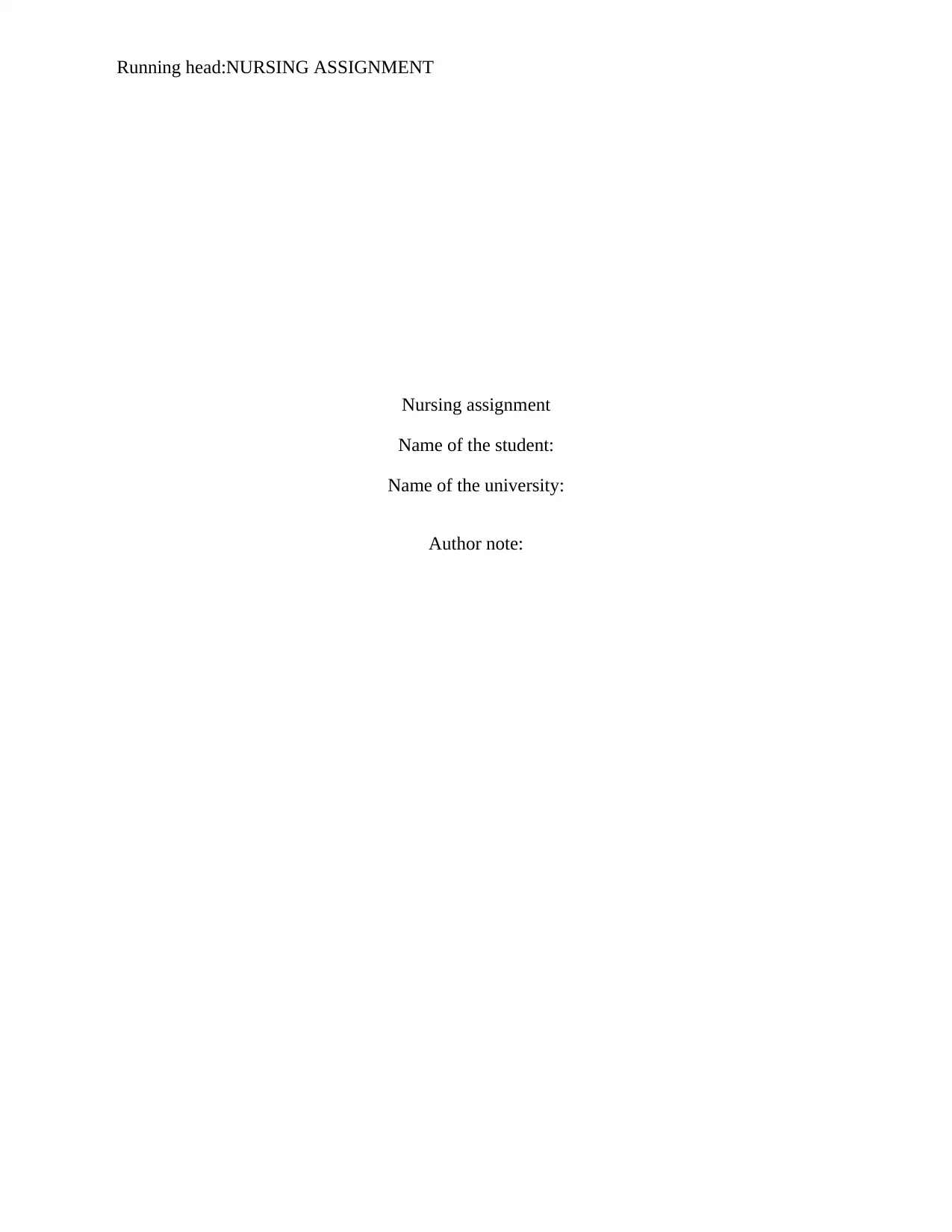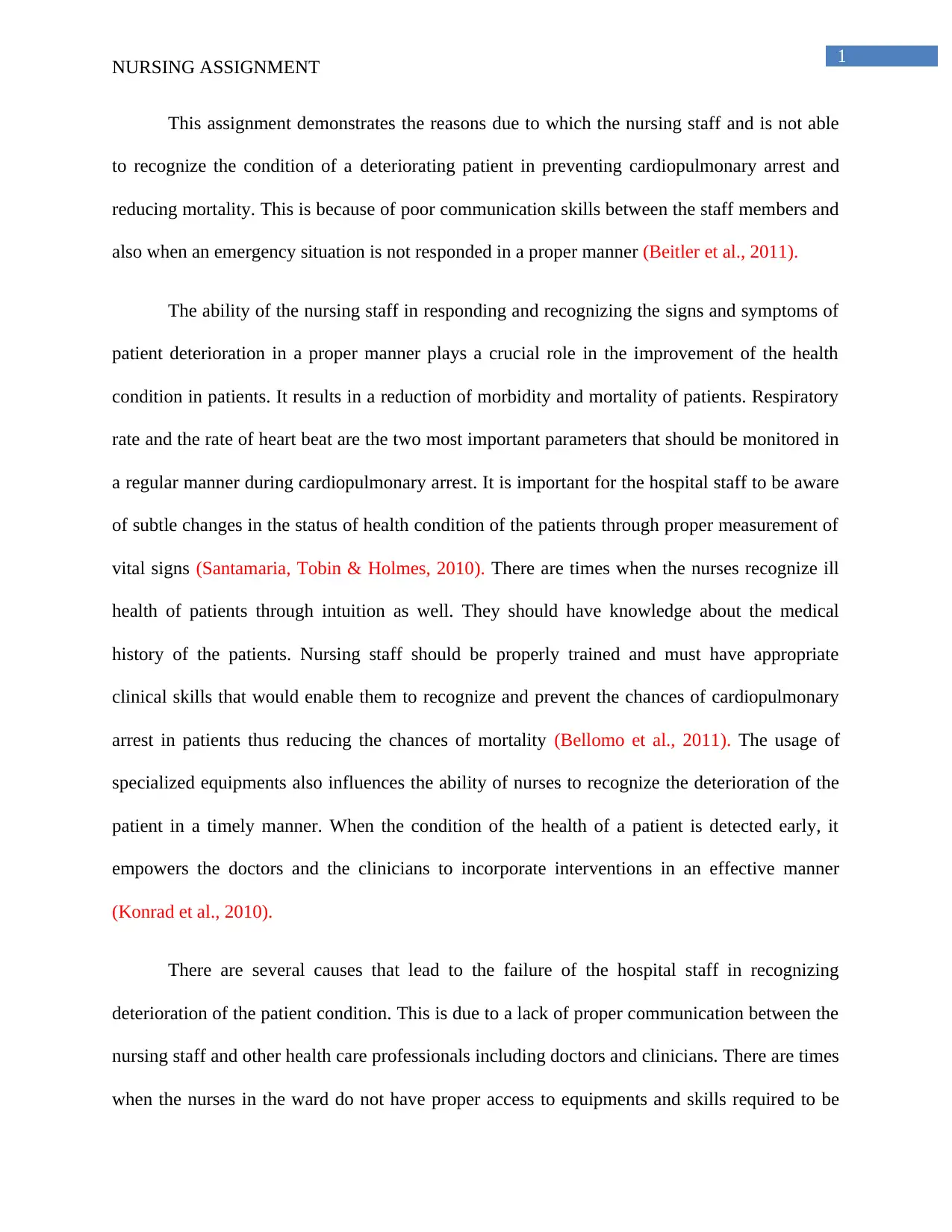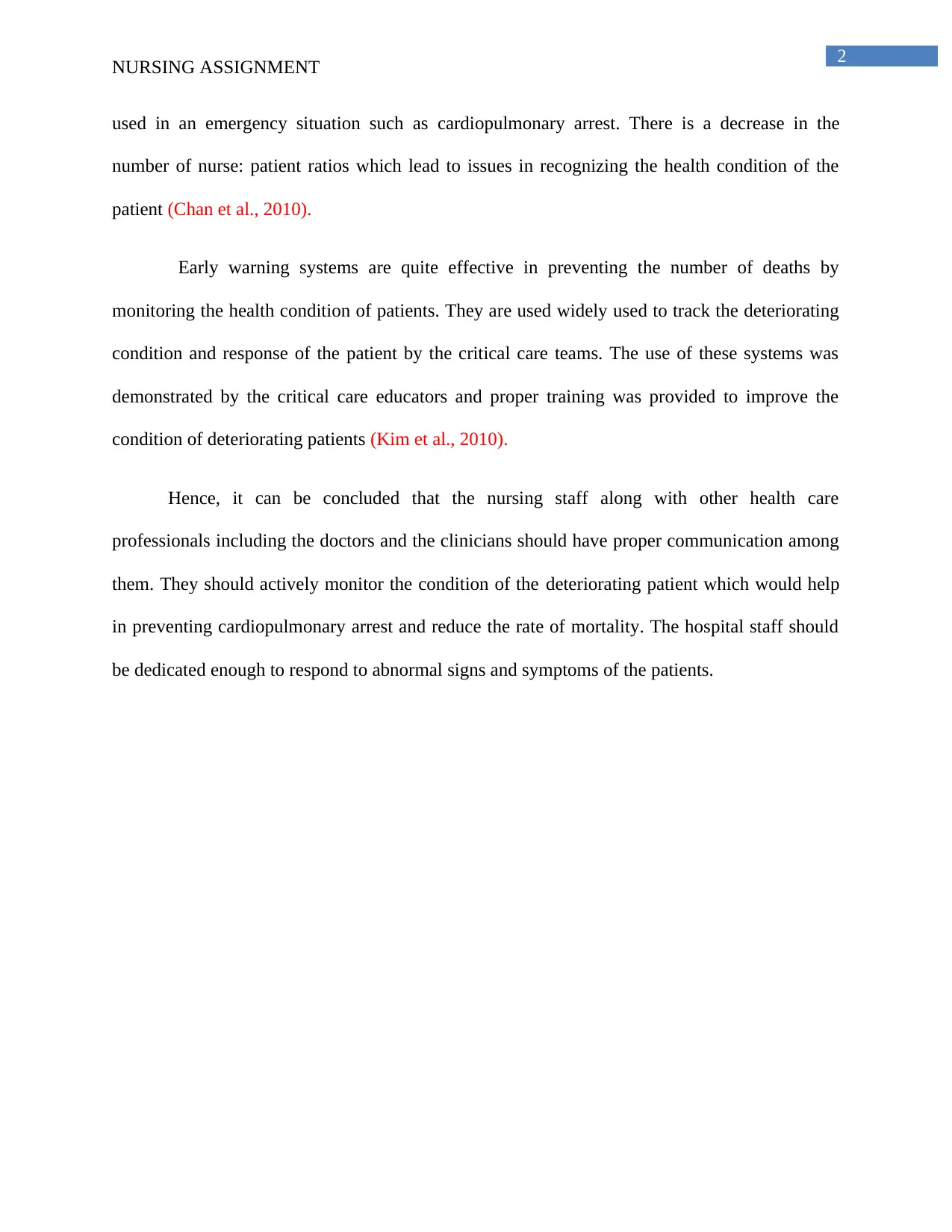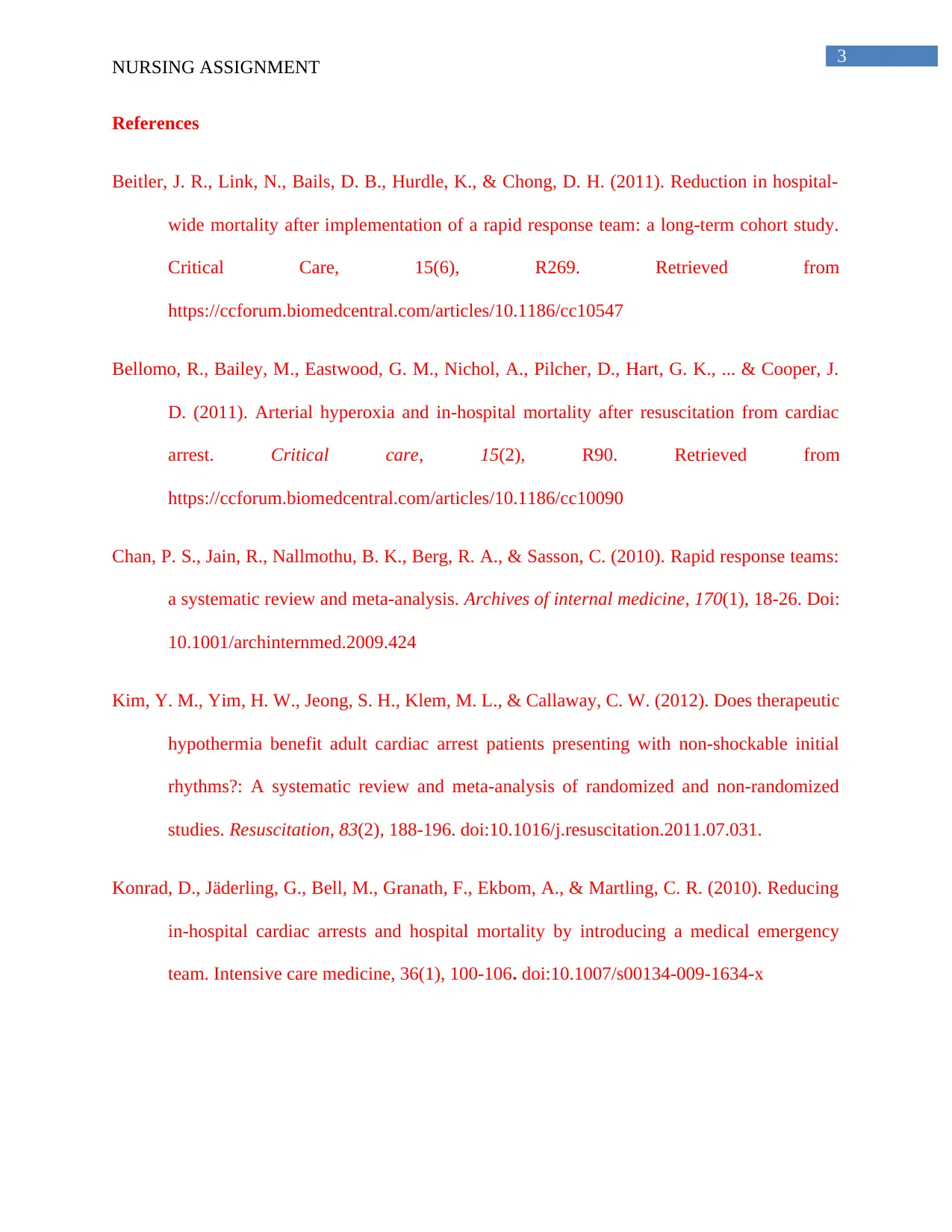Nursing Assignment: Deterioration, Arrest, and Mortality
VerifiedAdded on 2020/03/16
|5
|917
|70
Report
AI Summary
This nursing assignment examines the critical issue of patient deterioration and its impact on cardiopulmonary arrest and mortality rates. The report highlights the significance of effective communication among nursing staff, doctors, and clinicians in recognizing subtle changes in patients' health conditions. It emphasizes the importance of regular monitoring of vital signs and the use of specialized equipment and early warning systems to facilitate timely interventions. The assignment also addresses factors contributing to the failure of hospital staff in recognizing patient deterioration, such as inadequate communication, lack of access to equipment, and nurse-to-patient ratios. Ultimately, the report concludes that a proactive approach involving continuous monitoring, effective communication, and appropriate clinical skills is essential for preventing cardiopulmonary arrest and improving patient outcomes. The report also highlights the importance of training and the use of early warning systems to improve patient outcomes.
1 out of 5












![[object Object]](/_next/static/media/star-bottom.7253800d.svg)